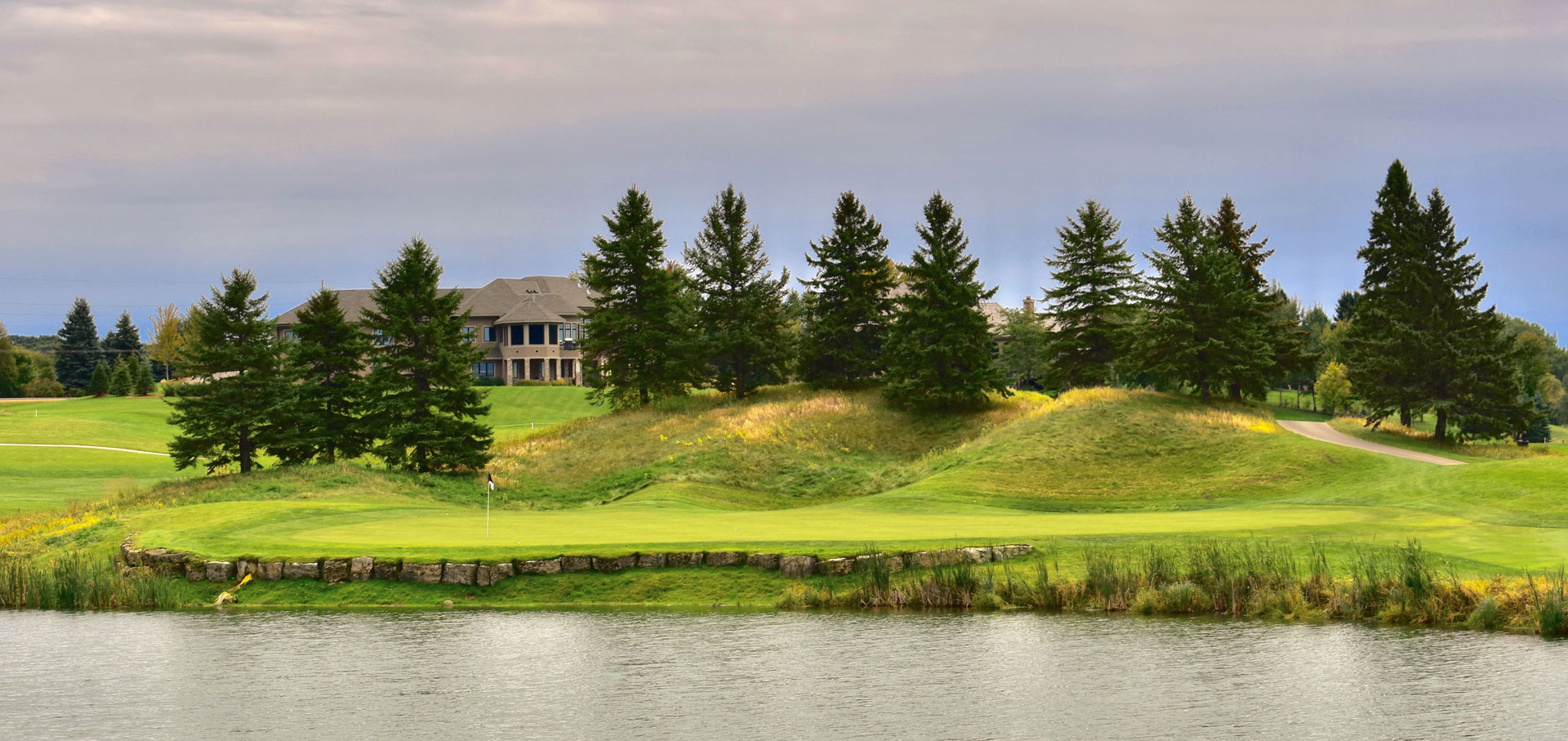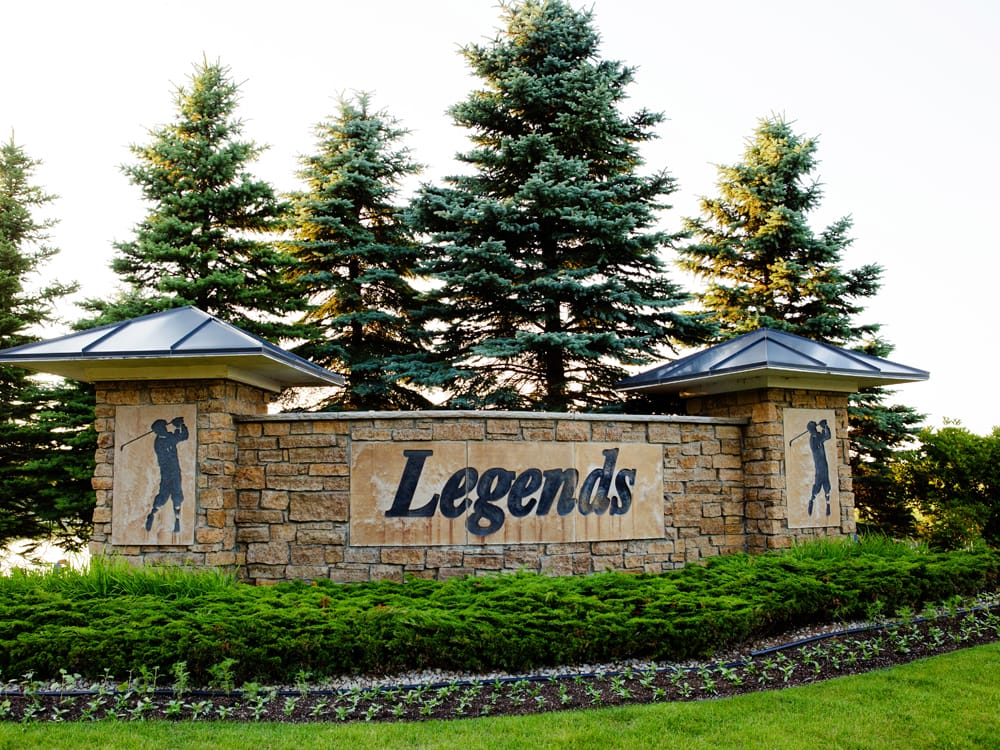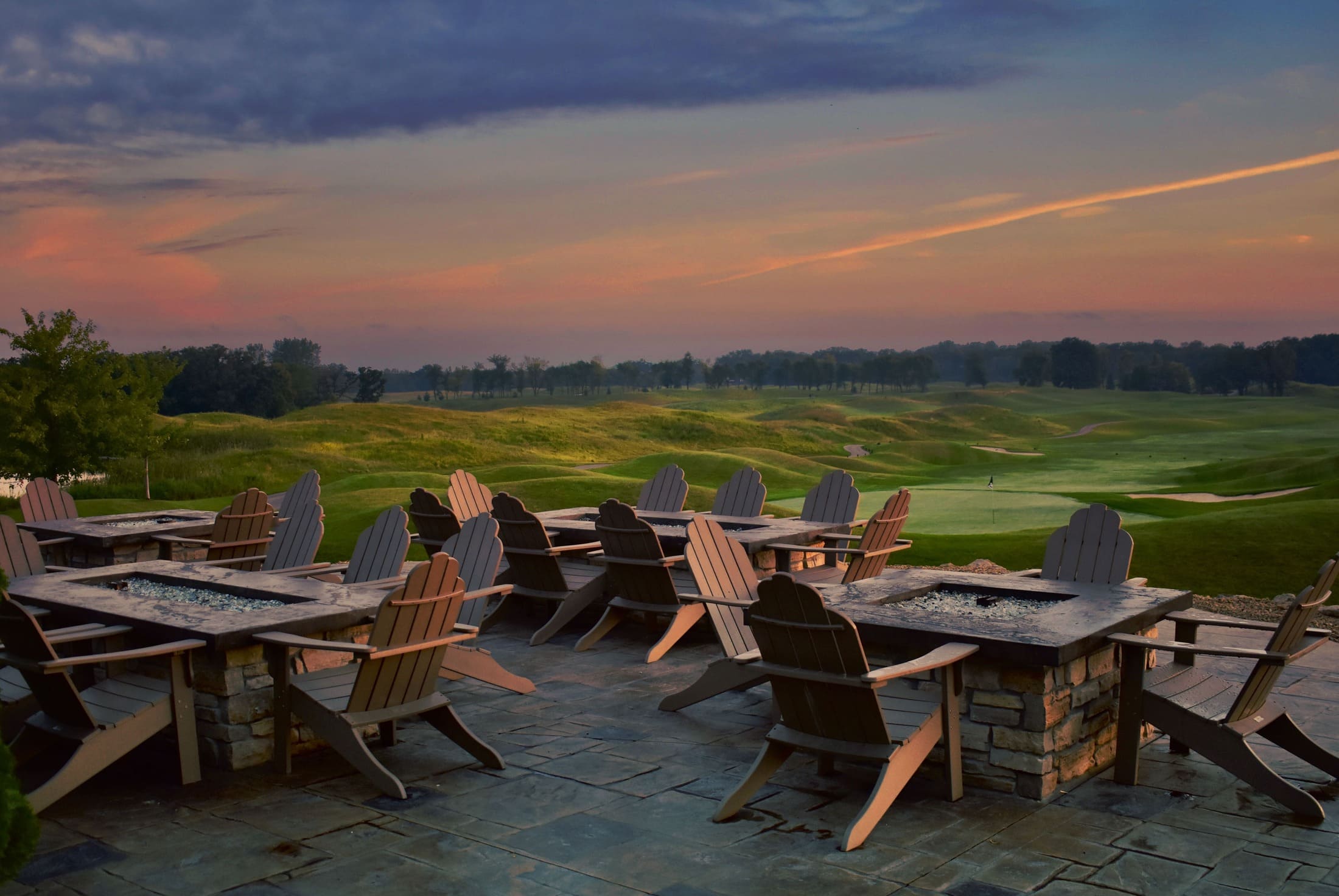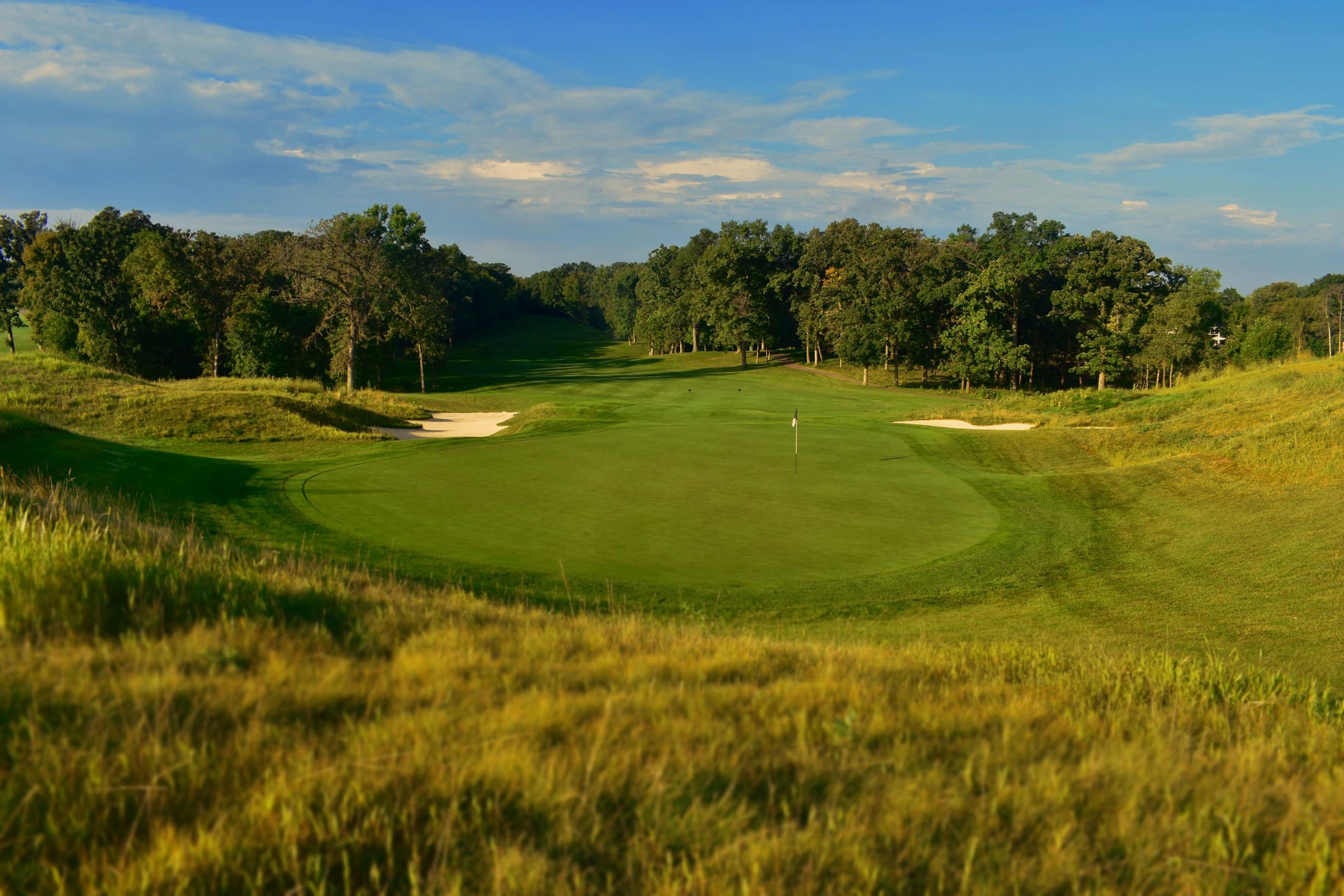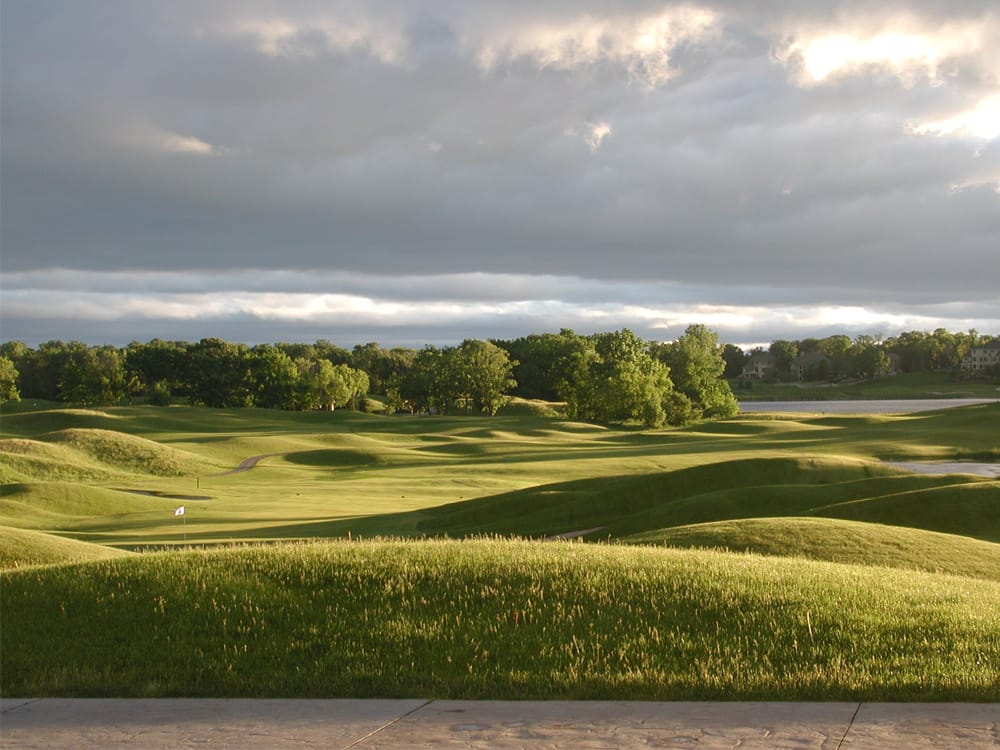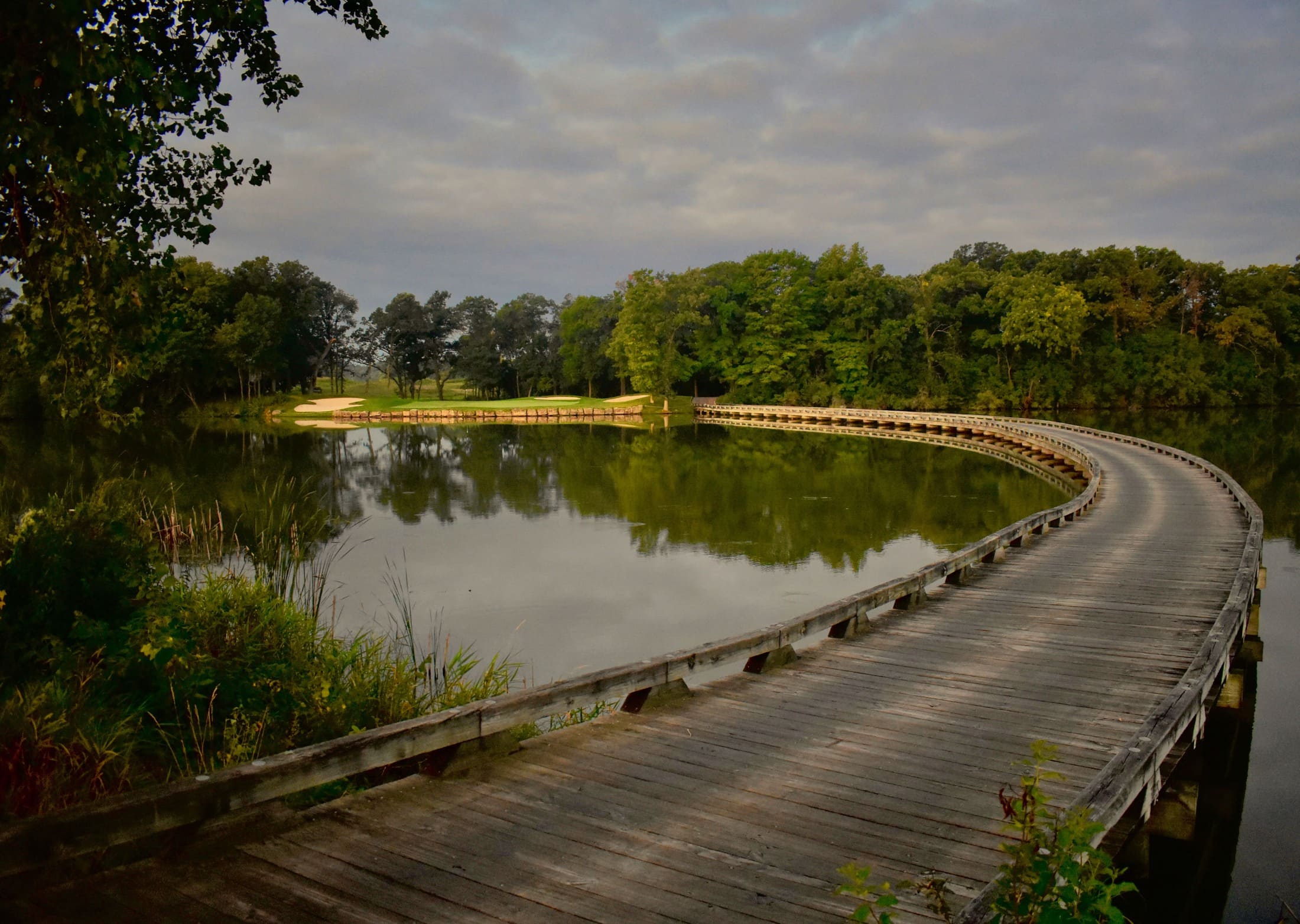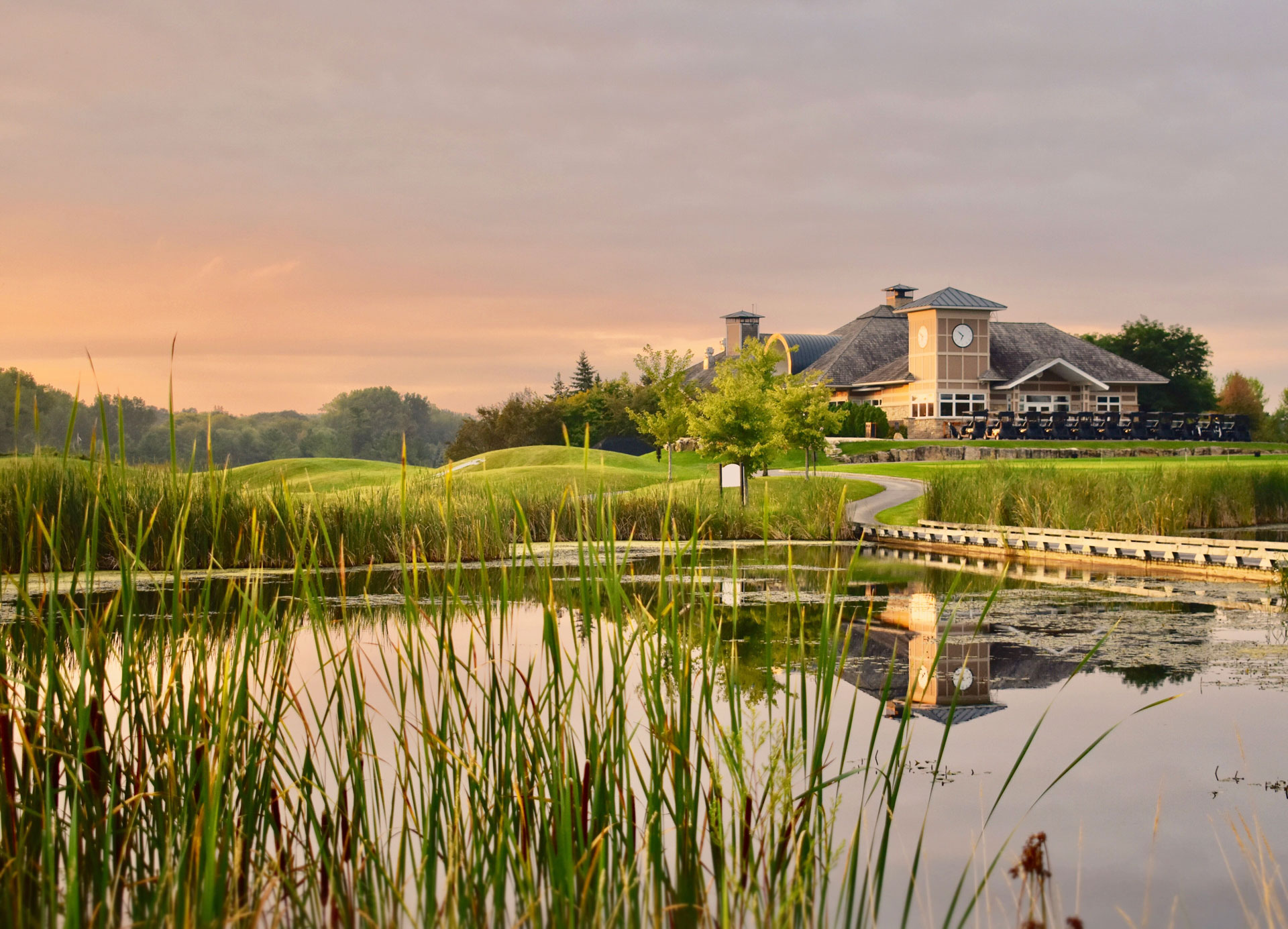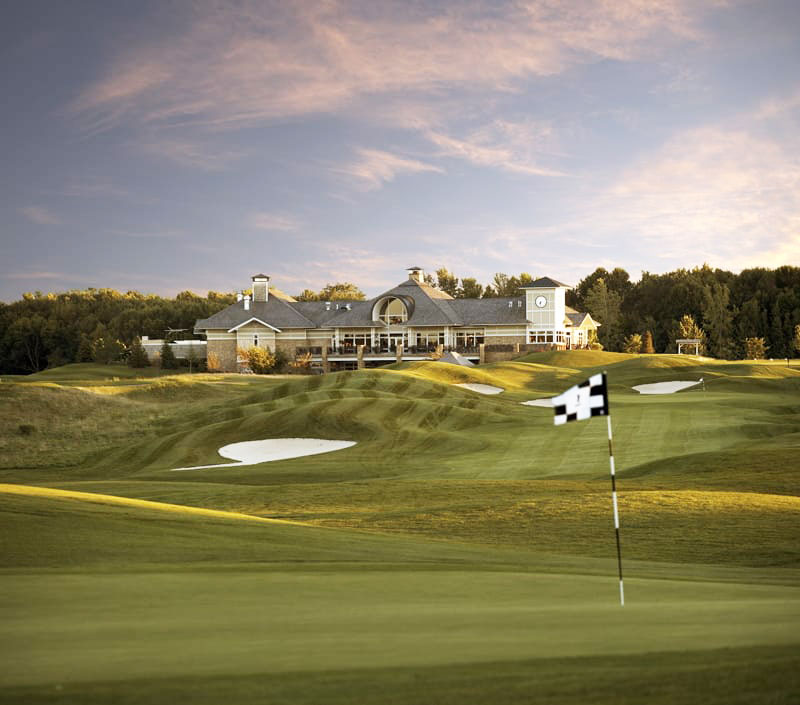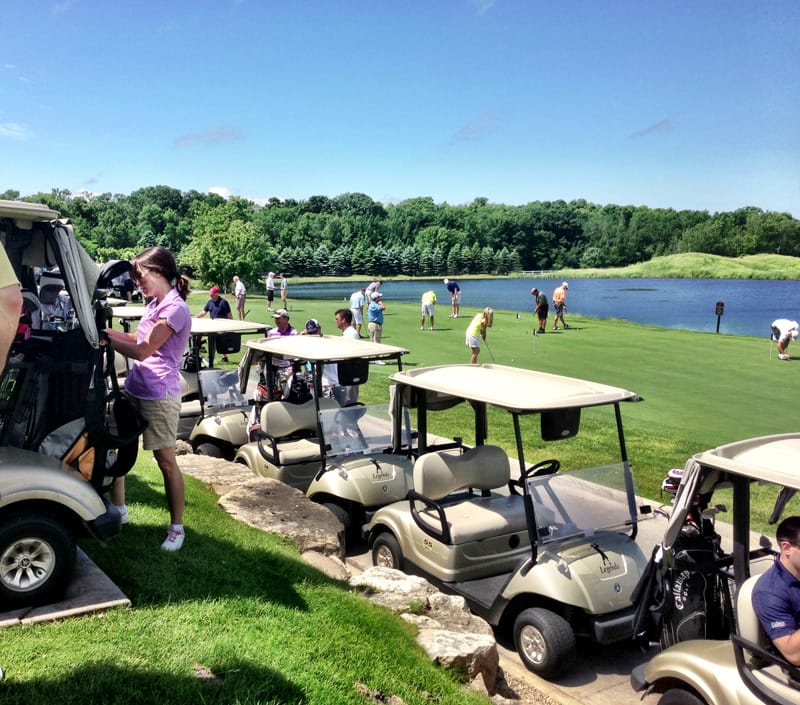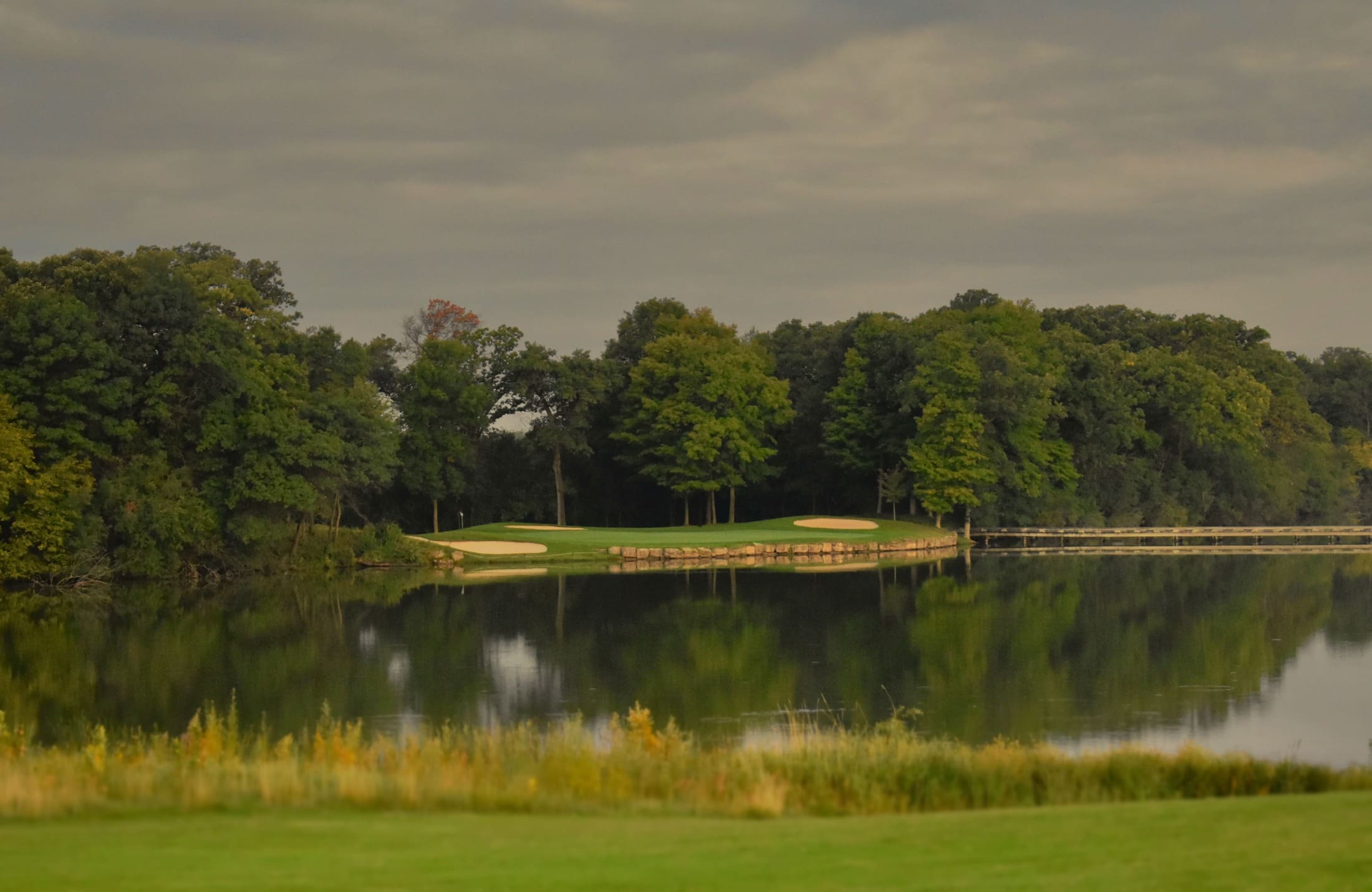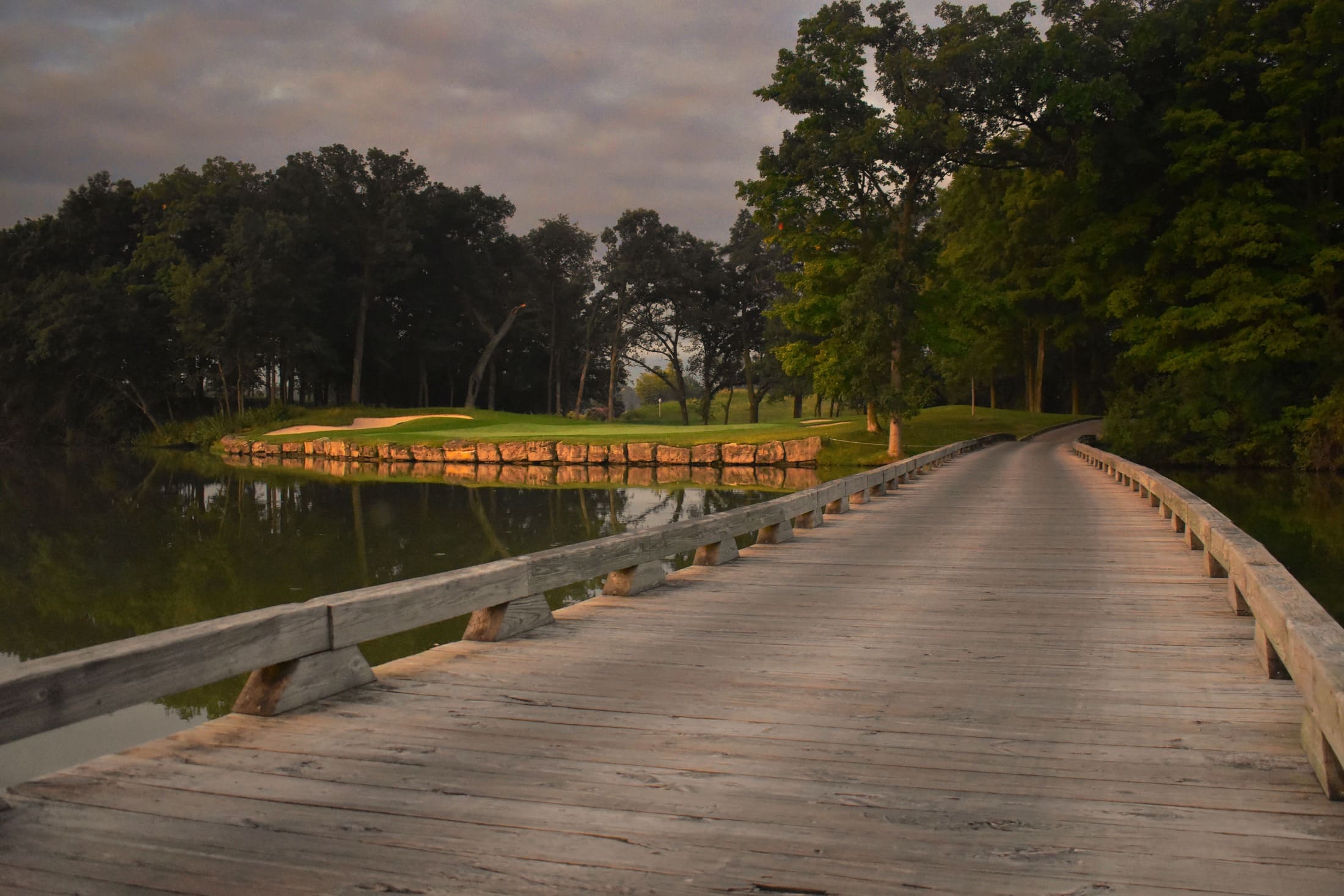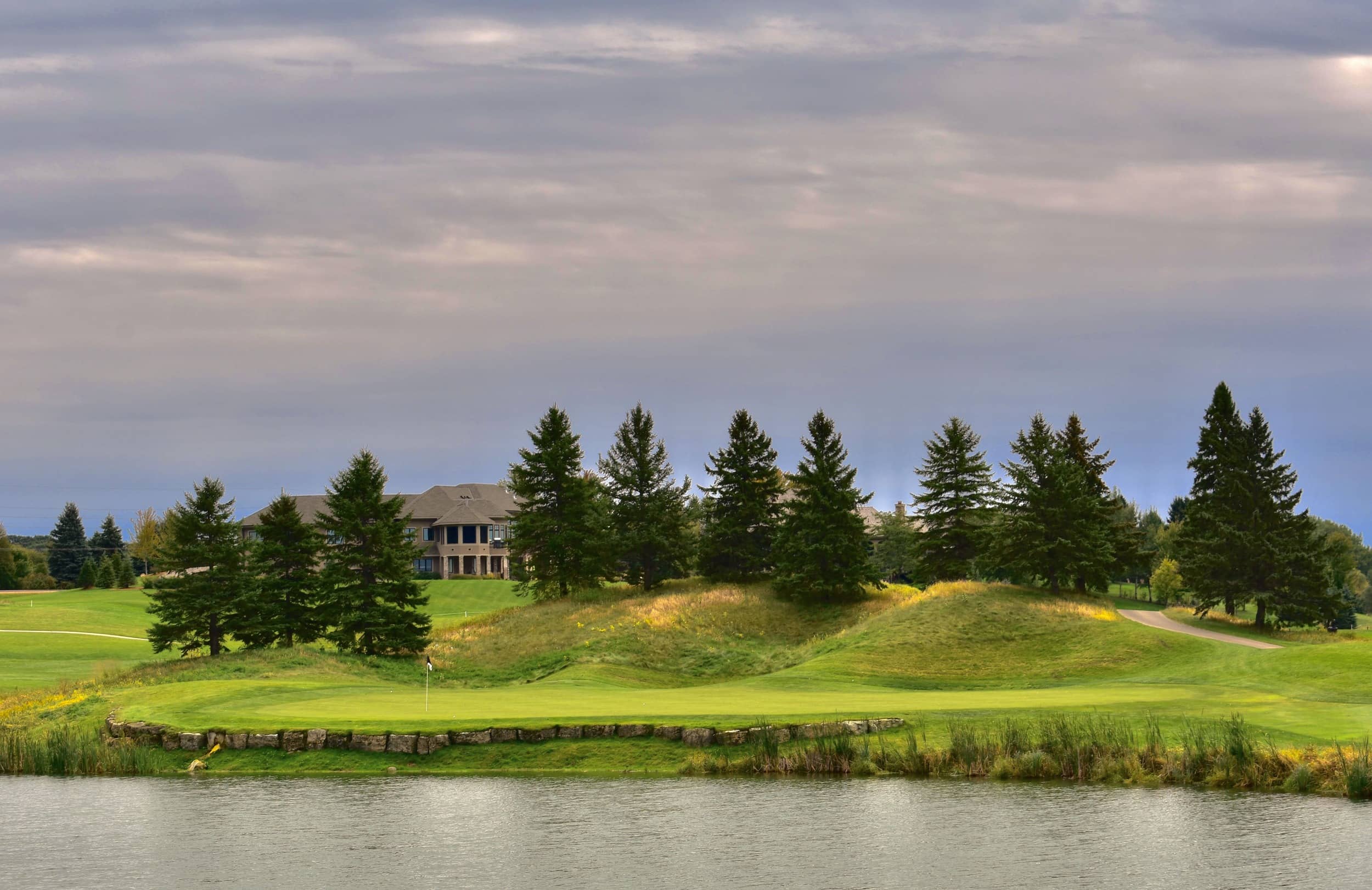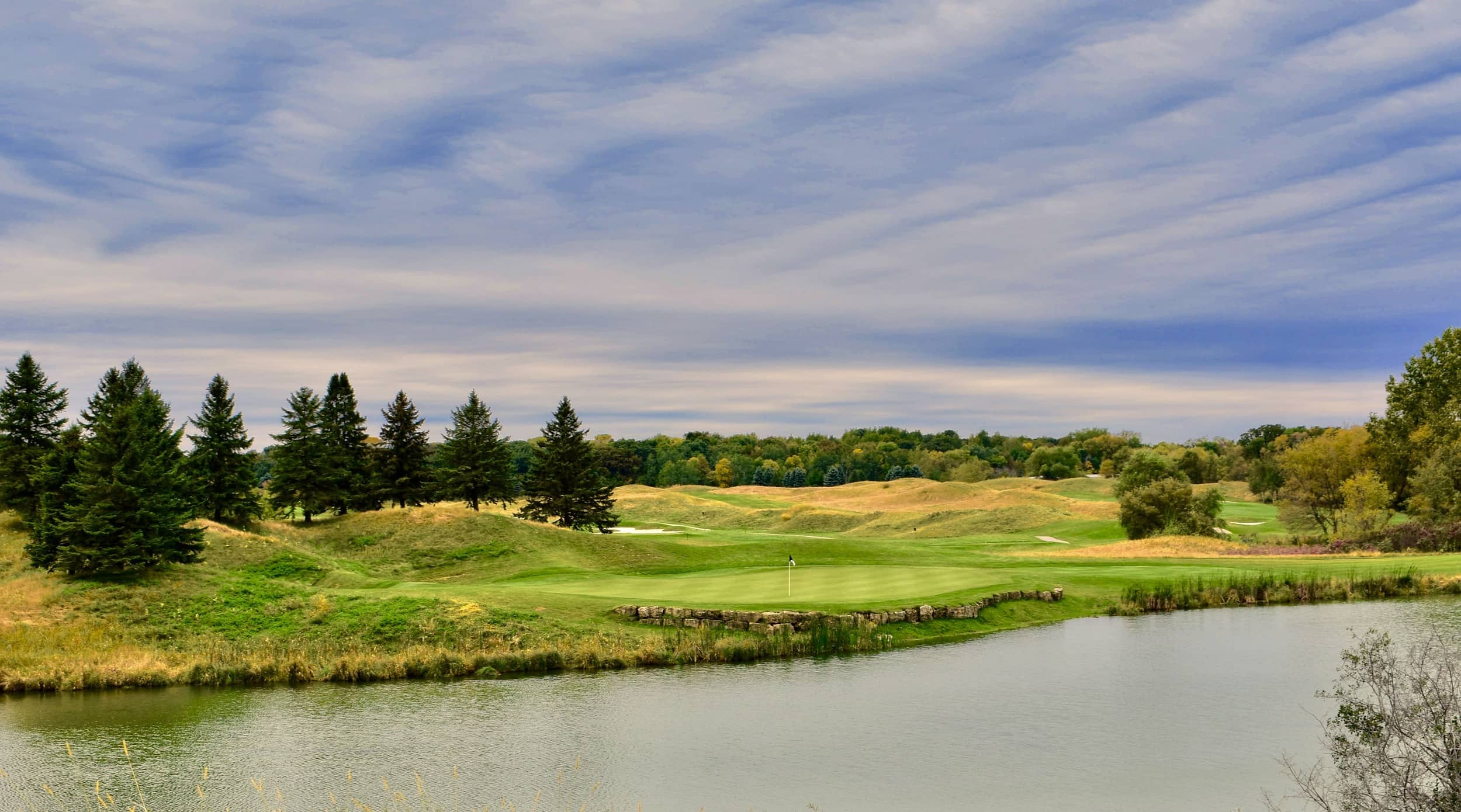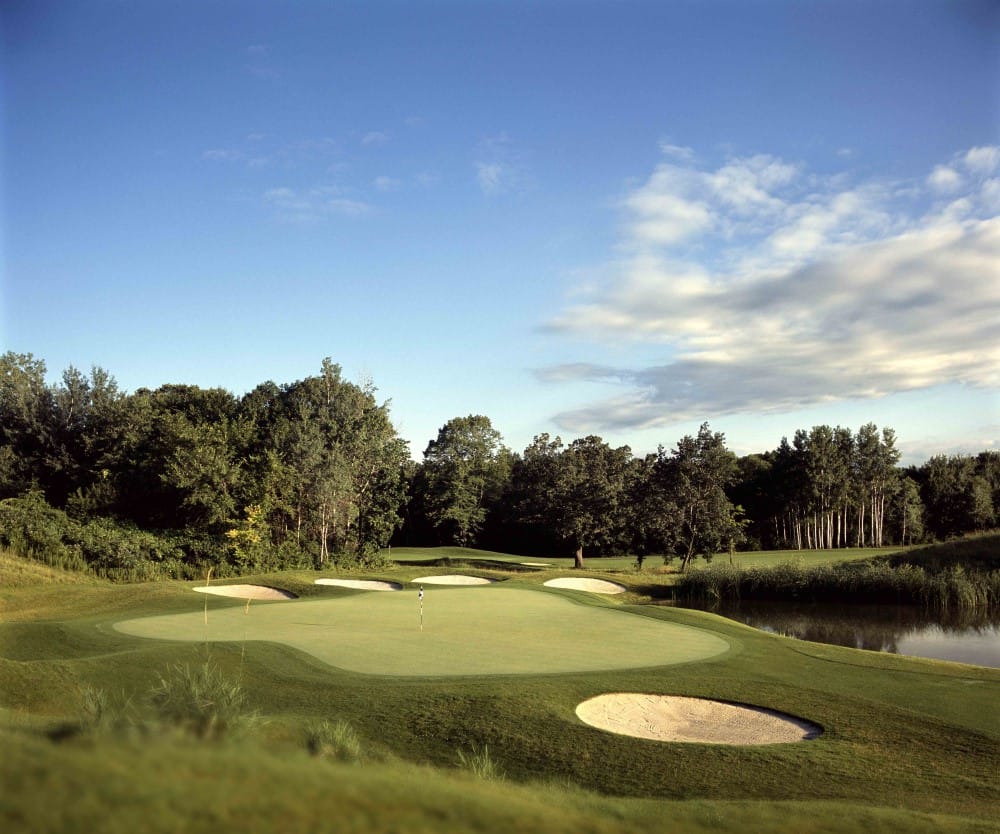Friendly to Nature. Challenging to Golfers.
Discover a natural alternative to ordinary golf at the Legends Golf Club. Carved from an expansive natural setting featuring a 30-acre lake, cascading creeks, scenic wetlands, deep ponds and dramatic topography, Legends is more than a stunning 18-hole daily-fee golf course. Acclaimed golf course architect Gill Miller transformed this ideal setting into a 7,126-yard, par-72 layout, that provides a haven for native plants and wildlife.
Legends Golf Club is just one of the many courses built by Tradition Golf and part of the family of Tradition Companies. While friendly to the environment, Legends Club is an entertaining challenge that demands intelligent course management at every hole. Visage GPS enhances the enjoyment of playing here.
Hole 1
The ideal tee shot plays along a line to the turf hollow just left of the green. The pin may be attacked from any position in the fairway. A turf hollow on the right front side of the green will grab any shot that falls short.
Hole 2
This long dogleg right Par 4 requires the tee shot to be placed long and well left of center in order to have a shot at the green. The green lies just to the right of the bunker visible from the tee. Two shallow turf hollows guard the right front of the green. Erring too far to the right on the approach shot will send your ball into Legends Lake which abuts the right side of the green.
Hole 3
The longest Par 4 on the course will play with a left to right crosswind most days. The wide fairway provides a large degree of latitude on the tee shot. The ideal tee shot plays in line with the grove of poplar trees in the distance. The fairway contour will take your ball left to right. A lone oak tree and a single bunker guard the left of the large back to front sloping green.
Hole 4
This short dogleg left Par 5 can play tough into the wind. The best tee shot is over the bend in the cart path. A long ball may catch the down slope for extra distance. A tee shot played shorter & towards the fairway bunkers will have a clear shot to the second landing area defined by bunkers on the right side of the fairway. The 3-club deep green is long, narrow & flanked on both sides with bunkers.
Hole 5
This is the shortest Par 3 on the course and far from a giveaway. The best shot is to the center of the green. Avoid the back sand bunkers at all costs.
Hole 6
The second of two brute Par 4’s on this nine may look straightforward but can be very nasty to the overly aggressive player. Place the tee shot along the left side of the fairway to eliminate the need for a heroic carry to the green. Avoid the ponds and wetland pockets on both sides. The green is guarded in the right front by a bunker & along the right side by a wetland.
Hole 7
This mid-length Par 3 may play very hard into a south wind. Bunkers left and right guard the two to three club deep green. If need be a golfer can take their tee shot up & over the trees on the left. For the timid there is a small landing area short & left of the green. The real timid may want to play from the forward tees.
Hole 8
A wonderful mid-length slight dogleg right Par 4 that just requires a little finesse off the tee. The trees on both sides of the fairway create a narrow shoot in which to file the flight plan for the ball. The small green is protected with bunkers on the right & left. You should be able to get to the pin from wherever your tee lands but the task will be made easier if you align the drive along the left side of the fairway.
Hole 9
This dogleg left par 5 is an uphill battle into the wind all the way to the green. The tee shot should be played along the right side of the fairway for the best access to the green. The small green is wide but not deep. The green & approach are open on the right side but double bunkered on the left. Caution – there is water far left of the 2nd landing area and green.
Hole 10
A truly delightful test of your shot making skill. Play the tee shot heroically over the water to the right side of the fairway to take the left side green side bunker out of play. Keep in mind the fairway slopes right to left towards the water.
Hole 11
This double dogleg Par 5 plays downwind & uphill on the tee shot then downhill to the green. The tee shot should be played over or towards the right side fairway bunker. Tee shots hit short won’t be able to see their way, in which case the golfer should aim towards the large spreading oak on the horizon to find the 2nd landing area. Reaching the green in two even with the wind takes courage.
Hole 12
This short Par 4 may be your best chance at birdie on this side. Be aggressive & cut a line over as much of the pond as you can. Shots played to the right side of the fairway will come back to the left towards the water. The green is bunkered on the left & has a few rolls designed in it to put the emphasis on your putting stroke.
Hole 13
This Par 3 is a tough test. The green is large and can take just about any shot. Over the green and you’re in the woods. The green has many undulations. Try to stay below the pin but work to place your shot directly at the flag.
Hole 14
We called this one the “Gopher It Hole” because if you don’t make the green regardless of where your tee shot ends up your approach requires a soft touch. With the exception of the small neck of land that leads onto the green, deep turf hollows surround the green. Unless your ball has STOP capabilities avoid going for the pin if it is set in the back right portion of the green. There is not much of a landing strip there.
Hole 15
This is a great Par 4. The best tee shot is to the left side of the fairway. Shots to the right side of the fairway will require a heroic carry over water to the green. The fairway will have a tendency to feed the ball to the right as it rolls out. Long tee shots will gain additional roll by catching the down slope. The green is very well defended with bunkers left front, water right front and turf hollows right rear.
Hole 16
A long uphill Par 5. Play the tee shot in line with the fairway bunker in the horizon. On the second shot, hit over the mid-point of the bunker at the left side of the fairway to the 2nd landing area. The mildly contoured green is bunkered on the left. Getting to the pin on the 3rd shot if you’re close in two shouldn’t be difficult. But if you’re a longer distance out, the shot will be significantly more challenging.
Hole 17
The hardest Par 3 from the silver tees. Perhaps the best Par 3 on the course from other more forward tees. The weaker players do have a bail out area on the right side of the green. The green is large and wide. Use plenty of club and go for the flag.
Hole 18
One last heroic carry is needed to position the ball for a good birdie opportunity. The hole is not as intimidating as it appears. Use the fairway bunker as a guide in aiming the tee shot. Most players should be able to aim at or left of the target bunker. If the wind is blowing, play safe to the right of the bunker or right of the water. The uphill green is well guarded allowing only the perfect approach to “tickle the tin.”
Just the Facts
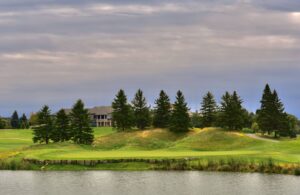
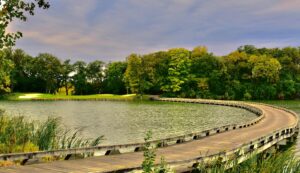
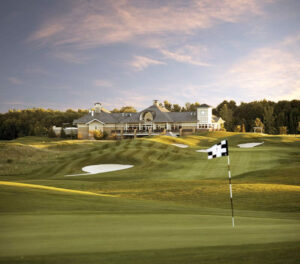
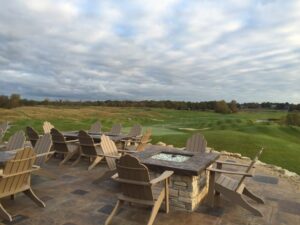
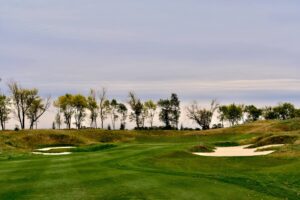
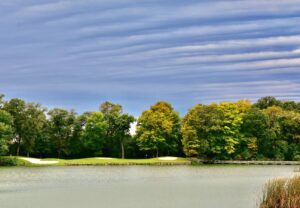

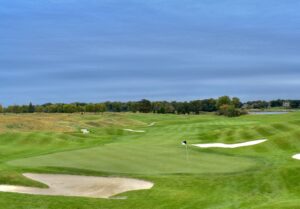
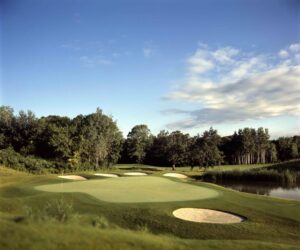
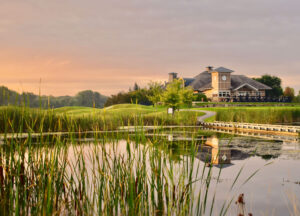
A Magnificent Structure!
The distinguished architectural firm of Ralph Rapson & Associates designed the impressive and welcoming clubhouse which was built by Links Development, a subsidiary of Retail Construction. Links has built many golf clubhouses including the structures at TPC of the Twin Cities and Bear Path GC among others.
Clubhouse Information
- Situated high above course – panoramic vistas of golf and nature.
- Approximately 24,000 square feet.
- 7-acre clubhouse site with 220 parking stall lot.
- Limestone, timber, wood shake roof, light, bright, ample windows etc.
- Golf shop – Fully equipped with top-quality merchandise.
- Dining/Grill/Lounge/Function rooms plus patio deck dining – all with westerly golf vistas.
- Outside Grill with 50’ X 60’ stone terrace.
- Elegant locker rooms – both men and women’s.
- Administration areas and cart storage.
- Architects: Ralph Rapson, Inc Builder: Links Development.


